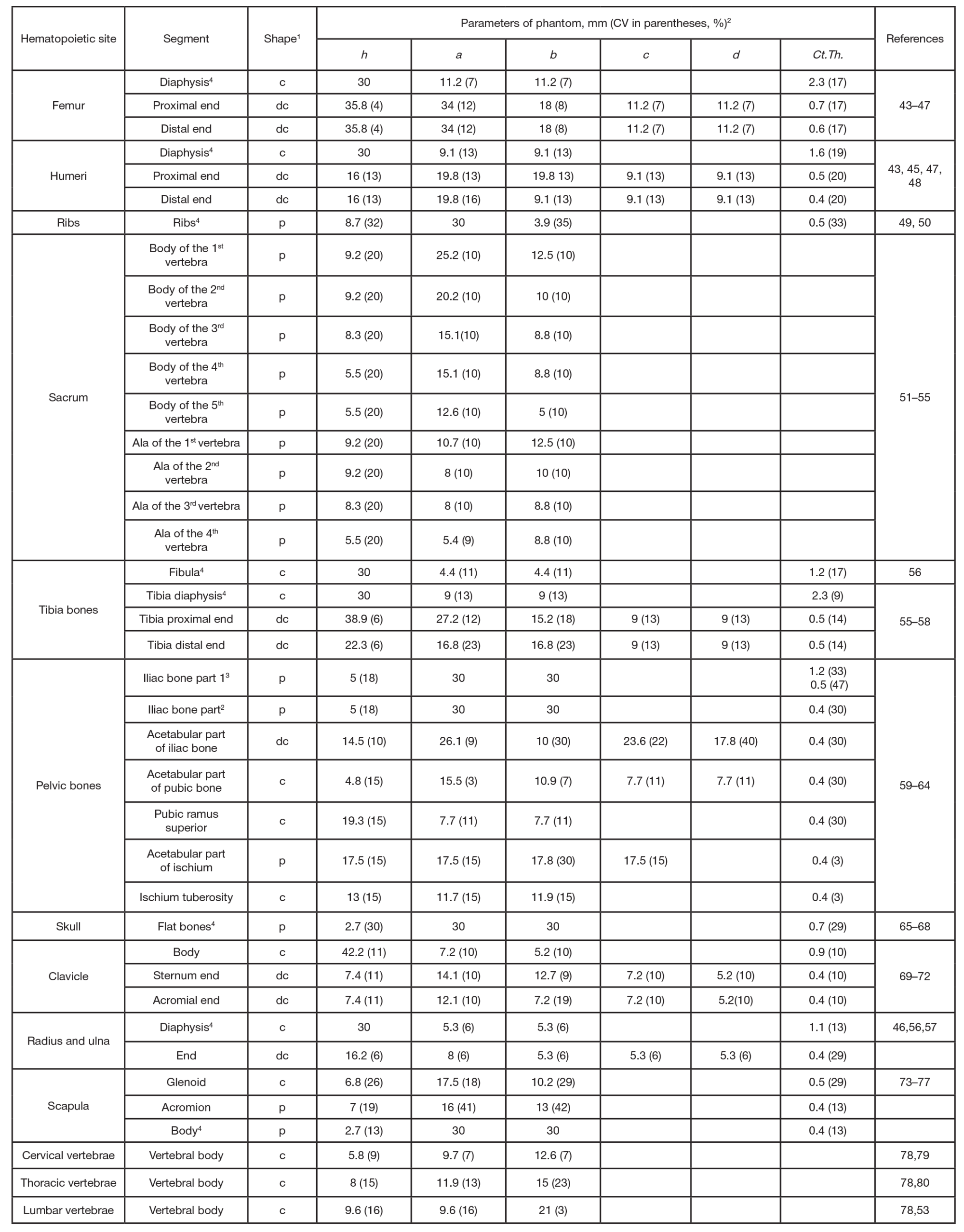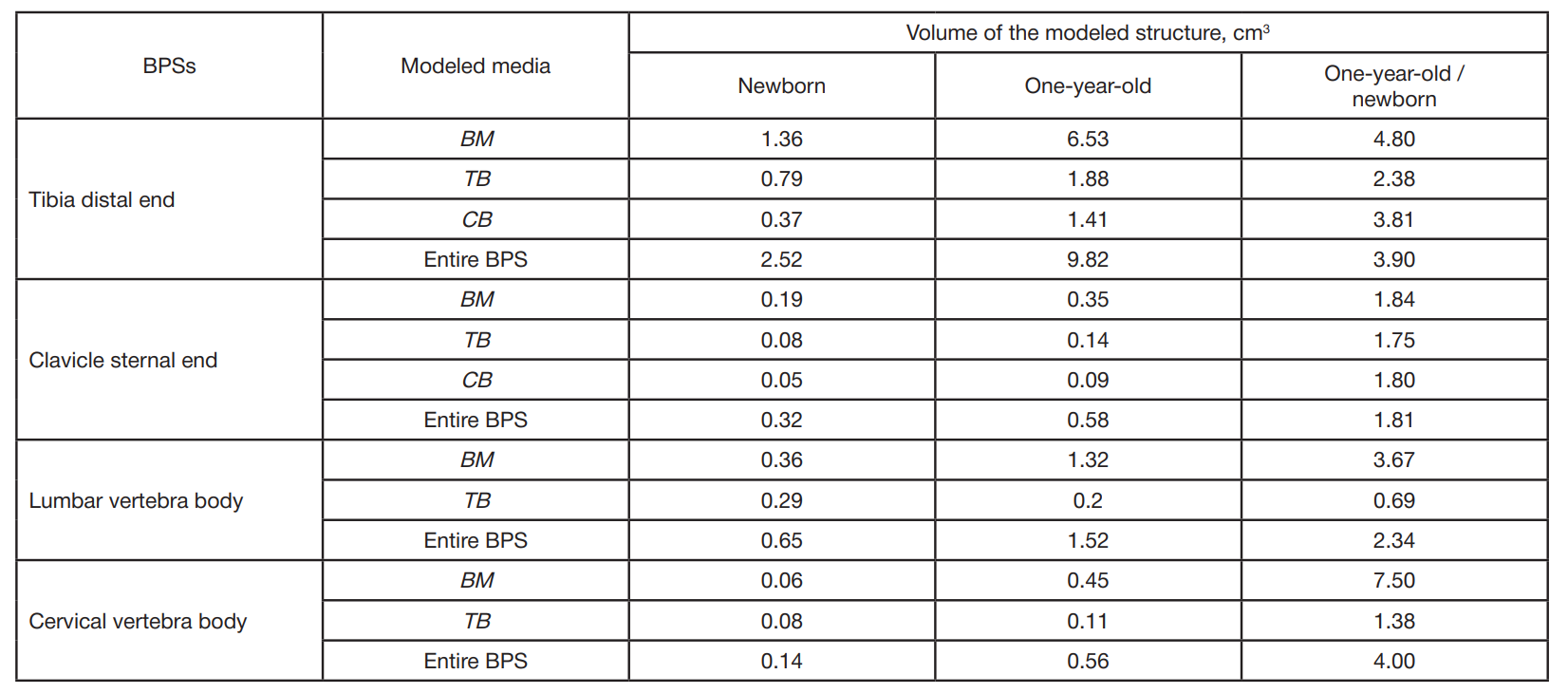
This article is an open access article distributed under the terms and conditions of the Creative Commons Attribution license (CC BY).
ORIGINAL RESEARCH
Computational red bone marrow dosimetry phantom of a one-year-old child enabling assessment of exposure due to incorporated beta emitters
1 Ural Research Center for Radiation Medicine, Chelyabinsk, Russia
2 Chelyabinsk State University, Chelyabinsk, Russia
Correspondence should be addressed: Pavel A. Sharagin
Vorovsky st., 68 A, Chelyabinsk, 454141, Russia; ur.mrcru@nigarahs
Funding: the work was part of the Federal Target Program "Ensuring Nuclear and Radiation Safety for 2016-2020 and up to 2035", with financial support from the Federal Medical Biological Agency of Russia.
Author contribution: Sharagin PA — data generation, analysis, interpretation, manuscript authoring and editing; Tolstykh EI — study methodology development, manuscript editing; Shishkina EA — conceptualization, manuscript editing.





